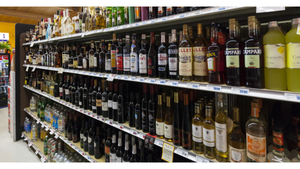PMA FRESH SUMMIT '99 1999-11-01 (2)
ATLANTA -- The pace of change in the fresh-produce industry will accelerate significantly after supermarkets traverse the Y2K threshold, when technology upgrades designed to protect retailers from the millennium bug are refocused to facilitate daily business activities.According to the annual FreshTrack research report, issued at last week's annual convention here of the Produce Marketing Association,
November 1, 1999
ROBERT VOSBURGH
ATLANTA -- The pace of change in the fresh-produce industry will accelerate significantly after supermarkets traverse the Y2K threshold, when technology upgrades designed to protect retailers from the millennium bug are refocused to facilitate daily business activities.
According to the annual FreshTrack research report, issued at last week's annual convention here of the Produce Marketing Association, Newark, Del., retail executives interviewed for the study predict "phenomenal growth" over the next five years in the use of certain best practices, such as electronic data interchange and case coding.
The study, conducted by Cornell University's Food Industry Management Program, reports that the size of a retailer determines what components he expects to implement.
However, "We were surprised to learn that it is not only the best-capitalized firms that are making investments in technology. Firm size is not an accurate predictor at all of technology adoption," said Edward McLaughlin, a professor of marketing at Cornell, and organizer of the study.
Overall, medium-sized operators said they are eager for three applications: case coding, cross docking and automated purchase-order systems. Large companies are more likely to use vendor-managed inventory, while smaller operators predict using continuous replenishment systems and EDI, wrote the Cornell researchers.
The numbers back up these conclusions. FreshTrack '99 used three benchmarks to gauge the growth of technology: 1994 (five years ago), 1999 and 2004 (five years from now). EDI by far has become the most popular of all the best practices among all retailers. In 1994, 7.1% of produce purchases were made using the format; today, that number has nearly tripled, to 20.7%.
The use of case coding for purchases has grown more than five-fold, increasing from 2% five years ago to 11.9% today. Automated POs have increased from 7.6% to 10.4%; continuous replenishment has grown from 0.6% to 2.7%; cross docking from 3.2% to 7.4%; and VMI from 0.3% to 4.6%
The report acknowledged that the adoption rate of technology to facilitate various tasks and transactions to date has been slower than anticipated -- due to the interruption of Y2K, according to McLaughlin. However, by the next benchmark (2004), the number of produce buys using most of these practices will skyrocket -- EDI will be used in 52.4% of transactions; case coding in 40.4%; and automated POs in 35.6%, the report said. To a lesser extent, purchases will incorporate cross docking (13.9%), VMI (13.8%), and continuous replenishment (16.7%).
EDI, the most popular technology currently in use by retail produce executives, is used for several retail-related functions, stated Cornell researchers. Currently, POs comprise 30.1% of all produce purchases among those retailers using EDI, a role that will likely increase to nearly 60% by 2004. PO acknowledgements will increase from 7.9% of purchases this year to 18% by 2004; and invoice/payments will increase from 10.9% currently to 16.5% by the next benchmark.
EDI's use in forecasting, advanced shipment notification and carrier shipment status will likewise grow, but by significantly smaller numbers, the study said.
When asked if they were using EDI in their business activities, most grower/shippers interviewed for FreshTrack '99 said "no," citing a number of reasons, most notably the industry's preoccupation with Y2K-related challenges. A more general complaint from suppliers was that "It was the retailers who stopped using it." Researchers surmised that one of the discouraging factors has been the inability of both buyers and sellers to integrate the technology into the whole buying-and-selling process.
Much of the technology under consideration by retailers to facilitate transactions relies on the Internet as a platform. This not only includes EDI (a more sophisticated application, the study noted), but also simpler functions like e-mail, Web pages and business-to-business transactions.
In this area, e-mail is by far the most common initiative used, with 65.3% of retail companies using the application. The average figure remains fairly consistent for both large and mid-size retailers (62.5% and 66.7%, respectively), though only 57.1% of small retailers use the technology. Smaller companies are also slower in launching Web pages (42.9%), vs. 50% for mid-size companies and 54.2% for large concerns. As a platform for EDI and business-to-business transactions, the Internet is not widely accepted, with less than 19% of respondents using it for transmission of data, concluded the researchers.
All this technology is assuming a higher profile in the retail landscape because of the unprecedented scope of industry consolidation, which has been ongoing through the course of the study. According to FreshTrack '99, the rate of mergers and acquisitions has not yet had a consolidating effect on the organization of retail buying offices. Indeed, statistics reveal more buyers than before. Survey respondents reported an average of 10.2 produce buyers per retail company in 1999, primarily located at three points throughout the distribution system: an average of 3.0 buyers at headquarters, 4.6 buyers at regional/divisional offices, and 2.6 located in the field offices.
Of the three, regional offices are growing fastest. Researchers surmised that, as consolidation creates larger companies that are spread over greater geographical distances, regional buyers are growing at a much higher rate than their colleagues in the field or at headquarters. Citing a 1994 Cornell study (unrelated to the PMA's FreshTrack series), the researchers recorded that the number of retail produce buyers at a regional office averages 4.6 persons, vs. 2.3 in 1994. This compares to 3.0 buyers at the headquarters level in 1999 (vs. 2.2 in 1994) and 2.6 persons in the field office today (vs. 1.3 in the last study).
The buyers' overall responsibilities have changed very little under the wave of consolidation. FreshTrack '99 stated that the average buyer still spends the largest part of his or her day (34.3%) meeting and talking with suppliers. Order entry/price changes consumed another 17.6%, while conferring with store personnel, assisting with marketing plans and quality-control issues occupied the remaining time. However, buyers at larger companies today spend 43% of their time conferring with grower/shippers (up from 36% in 1994), and less time on other tasks. At smaller retailers, buyers are described more as "generalists," since they oversee or engage in a greater number of jobs over the course of the day.
Helping to define the buyer's role at store level is a relatively new addition to the scene, the category manager. According to the study, there are an average of 21.4 retail produce categories. In-store, the concept has faced numerous hurdles, such as variable weights and limited product-identification capabilities. Nevertheless, many retailers said they are committed and are implementing at least some aspect of the practice.
"It's important to recognize that produce buying today is often accomplished within the context of category management," said McLaughlin.
Among the applications used currently by more than 50% of the retailer respondents in their supermarkets are: better management of promotions and displays (89.1%), optimization of retail pricing (85.1%), clustering of stores for targeted promotions (78.3%), and reduction of duplicate stockkeeping units in a category (also 78.3%).
Shippers are divided in their opinions as to their role in produce category management. According to grower/shippers quoted in FreshTrack '99, low margins are preventing them from fulfilling the "captain" role that manufacturers fulfill in the dry grocery aisle with their ability to conduct market analyses and new product research.
"Currently, we see a bit of a gap opening, between what is practically standard operating procedure in most retail operations, and the same activity at shipper levels," McLaughlin continued. "Grower/shippers are clearly moving toward category management, but appear to be doing so cautiously in many cases -- investments can be large, and payoffs [for them] uncertain."
However, a minority of suppliers interviewed are working to develop information to use in category management. This effort is leading grower/shippers to believe that they can be proactive as better information providers, rather than waiting for retailer customers to dictate preferences.
All this activity centered on the produce department, in the midst of consolidation, is due in large part to the emergence of fruit and vegetables as a consumer destination full of high profits, wrote the researchers. Produce executives participating in the study said that, on average, the department contributes 12.8% to total store sales. While this is down slightly from 13.7% in 1994, these executives expect produce to account for 14.5% of store sales by 2004.
For a complete copy of the FreshTrack '99 research study, which includes a detailed analysis of supplier reaction to retailer consolidation, contact the PMA at (302) 738-7100.
About the Author
You May Also Like




